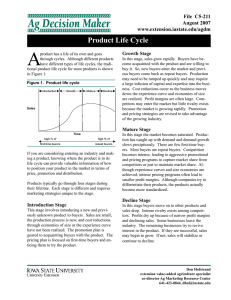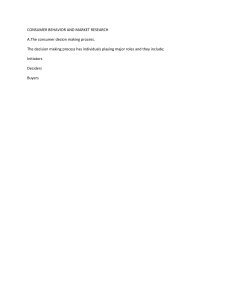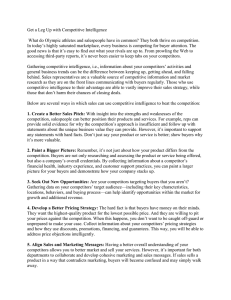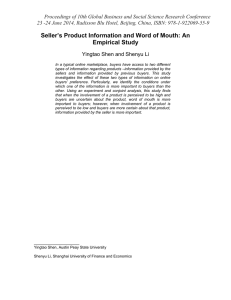Product Life Cycle Stages: Introduction, Growth, Maturity, Decline
advertisement
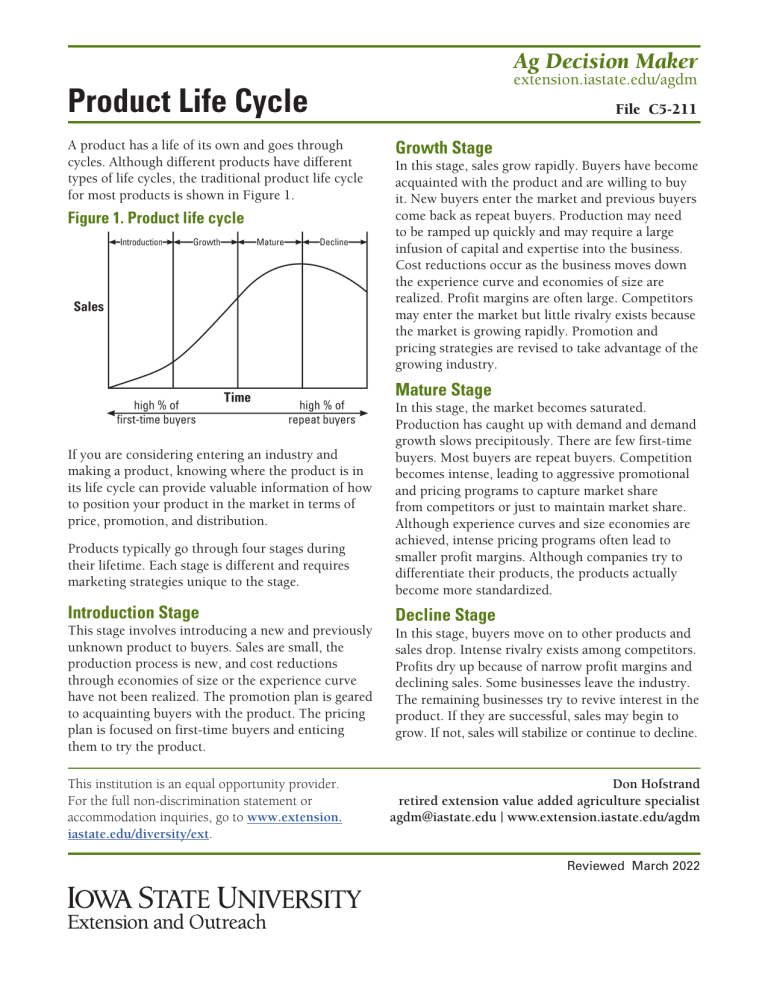
Ag Decision Maker extension.iastate.edu/agdm Product Life Cycle A product has a life of its own and goes through cycles. Although different products have different types of life cycles, the traditional product life cycle for most products is shown in Figure 1. Figure 1. Product life cycle File C5-211 Growth Stage In this stage, sales grow rapidly. Buyers have become acquainted with the product and are willing to buy it. New buyers enter the market and previous buyers come back as repeat buyers. Production may need to be ramped up quickly and may require a large infusion of capital and expertise into the business. Cost reductions occur as the business moves down the experience curve and economies of size are realized. Profit margins are often large. Competitors may enter the market but little rivalry exists because the market is growing rapidly. Promotion and pricing strategies are revised to take advantage of the growing industry. Mature Stage If you are considering entering an industry and making a product, knowing where the product is in its life cycle can provide valuable information of how to position your product in the market in terms of price, promotion, and distribution. Products typically go through four stages during their lifetime. Each stage is different and requires marketing strategies unique to the stage. Introduction Stage This stage involves introducing a new and previously unknown product to buyers. Sales are small, the production process is new, and cost reductions through economies of size or the experience curve have not been realized. The promotion plan is geared to acquainting buyers with the product. The pricing plan is focused on first-time buyers and enticing them to try the product. This institution is an equal opportunity provider. For the full non-discrimination statement or accommodation inquiries, go to www.extension. iastate.edu/diversity/ext. In this stage, the market becomes saturated. Production has caught up with demand and demand growth slows precipitously. There are few first-time buyers. Most buyers are repeat buyers. Competition becomes intense, leading to aggressive promotional and pricing programs to capture market share from competitors or just to maintain market share. Although experience curves and size economies are achieved, intense pricing programs often lead to smaller profit margins. Although companies try to differentiate their products, the products actually become more standardized. Decline Stage In this stage, buyers move on to other products and sales drop. Intense rivalry exists among competitors. Profits dry up because of narrow profit margins and declining sales. Some businesses leave the industry. The remaining businesses try to revive interest in the product. If they are successful, sales may begin to grow. If not, sales will stabilize or continue to decline. Don Hofstrand retired extension value added agriculture specialist agdm@iastate.edu | www.extension.iastate.edu/agdm Reviewed March 2022
